Alloa bridge (Throsk Viaduct)
Alloa bridge (Throsk Viaduct)
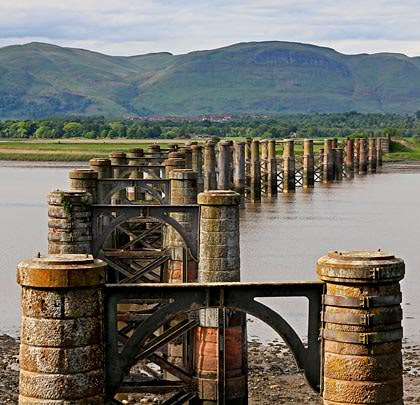
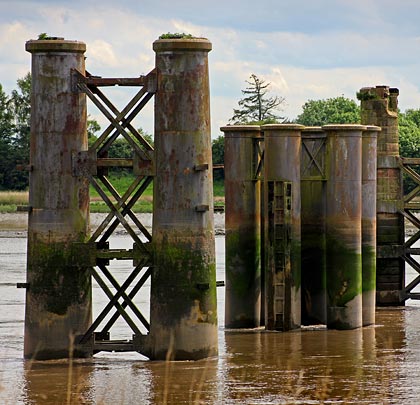
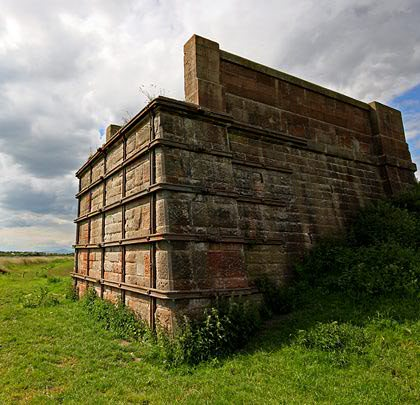
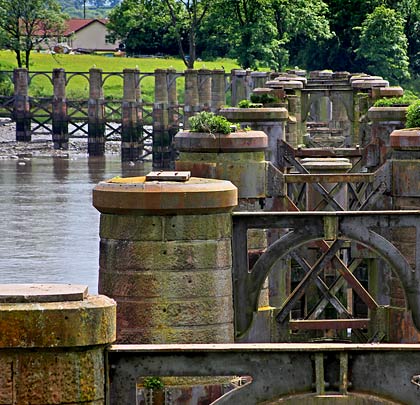
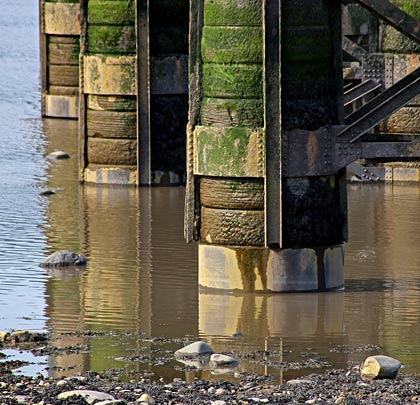
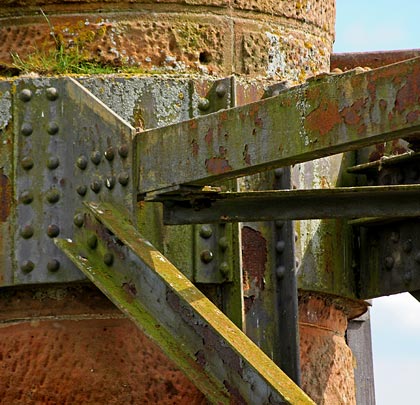
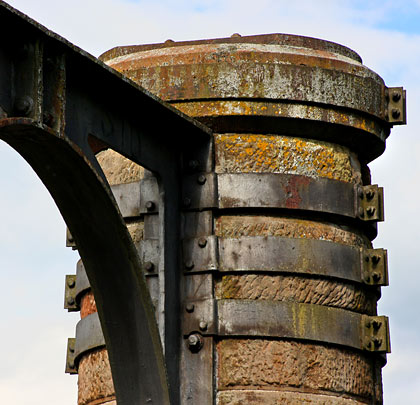
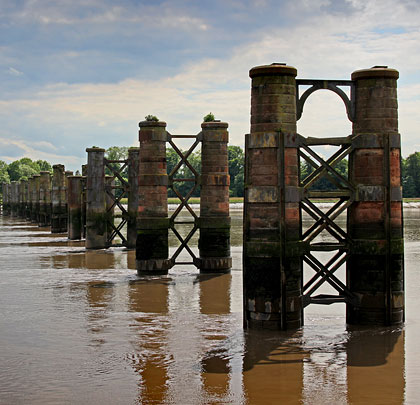
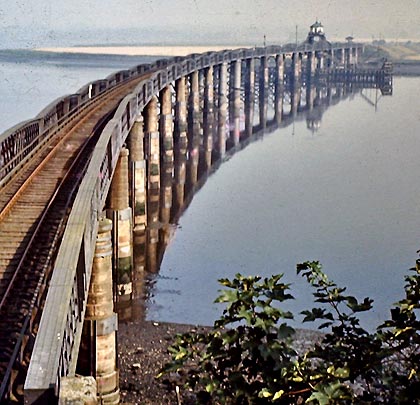
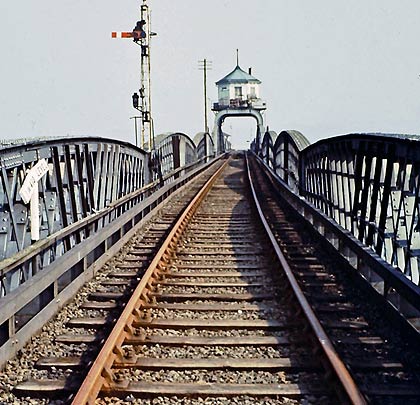
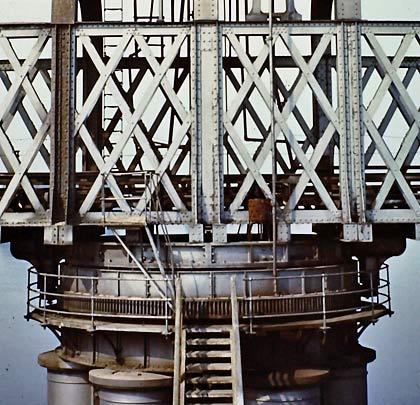
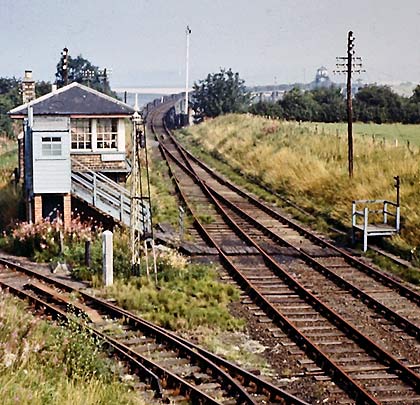












Authorised by a Parliamentary Act of August 1879, the Caledonian Railway opened a section of line between Dunmore Junction, on the South Alloa branch of the Scottish Central Railway, and a goods station near Glasshouse Loan in Alloa on 1st October 1885. Four years later, a connection was made to the North British network at Alloa West Junction, allowing through running.
Known as the Alloa Railway, the route was double track except over its engineering centrepiece – a bowstring girder bridge of 540 yards in length across the Forth (structure number ALL/9) – which only accommodated a single line. Signal boxes were located at both ends. Built by Messrs Watt & Wilson of Glasgow, the first train over it – heading south – consisted of three new carriages fitted with gas lamps and carrying about a dozen passengers.
From the south, the structure comprised 13 spans on a curve of about 43 chains radius, climbing at 1:410. Two more spans on the level were following by a swing bridge of 143 feet, controlled from a cabin erected above the track and driven by a stationary steam engine. This provided two clear openings for river craft of 61 feet either side of a pier which was protected by a timber cutwater projecting 47 yards both up and down the river. Four further spans created a connection to the abutment on the north bank, making 21 in total. The deck was raised 23 feet above high water level, supported on piers that were constructed of two stone columns joined by ironwork at the top and bottom.
Damage to the bridge was occasioned during autumnal gales in 1899 when the sailing ship Stephanie, carrying salt from Hamburg to Bo’ness, was driven against a pier by the high tide. This prompted much consternation amongst the local shipping community who had long considered the structure to be a barrier to trade, located on part of the river afflicted by treacherous currents. The bridge’s “evil reputation” had extended to Continental ports and several tugboat owners prohibited their vessels from passing beneath it. A committee was appointed to make strong representations to the Caledonian Railway.
The difficulties escalated on 12th October 1904 when the schooner Stirling collided with one of the piers, displacing some of the girders, as it passed through the swing span. Trains were not running again until 1st June 1905. A second period of enforced inactivity began on 15th August 1920 when a surrendered German warship broke from her moorings and crashed into the bridge, causing serious damage. Reopening came on 1st March 1921. As a consequence of all this, piers 9, 10 and 17 (from the south) were replaced in cast iron whilst considerable additional cross-bracing was installed on all the piers.
During the line’s final years, the passenger service was operated by a four-wheeled railbus but this ceased on 29th January 1968. Regular freight traffic over the bridge ended on 6th May but trains continued to bring coal to the engine house on the swing span until this was fixed in the open position on 18th May 1970. Work to lift the track got underway on 8th February 1971; thereafter the deck sections were dismantled.
Today the piers still stand in the river as an evocative reminder of ‘the other Forth bridge’. Substantial abutments are sited on both banks – the northern one is heavily strapped with rail whilst the other is affected by cracking.







